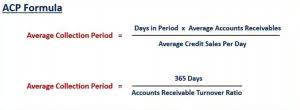
An example of contra equity with buying back shares or stock would be a company that has issued shares to the public. The contra equity account would be used to offset the equity account on the balance sheet. A contra equity account is an account that is used to offset another equity account on the balance sheet.
Contra Account

Contra revenue accounts play a vital role in accurate financial reporting by providing transparency about the various deductions from a company’s gross revenue. By properly utilizing these accounts, businesses can present a more detailed picture of their sales performance and provide stakeholders with valuable insights into factors affecting revenue. Whether tracking returns, discounts, or rebates, contra revenue accounts help ensure that financial statements fairly represent a company’s actual performance in the marketplace.

Common Types of Contra Revenue
It helps businesses accurately report net sales by accounting for returns, allowances, and discounts. This ensures clarity in financial reporting and aids in understanding customer behavior for better business decisions. Navigating the world of accounting can sometimes feel like piecing together a complex puzzle. This lesser-known but essential element helps businesses accurately report their net sales by offsetting gross revenue with returns, allowances, and discounts. Understanding how these accounts work not only sharpens your financial reporting but also unlocks insights into customer behavior and smarter Bookkeeping vs. Accounting business decisions.
Detailed Example: Sales Returns and Allowances
- The main contra equity account is treasury stock, which is the balance of all stock repurchased by the company.
- For example, GAAP accounting (or generally accepted accounting principles) requires fixed assets to be reported at cost on the balance sheet, but, over time, that value depreciates as the assets are used.
- Contra accounts are essential tools in accounting that provide a method to accurately reflect adjustments and reductions in related accounts.
- One such method is the use of contra accounts, a type of account that directly correlates and offsets a related account.
- The clear distinction between gross and net revenue allows for better financial analysis and informed decision-making by investors and other interested parties.
- To illustrate the contra revenue account Sales Returns and Allowances, let’s assume that Company K sells $100,000 of merchandise on credit.
Master accounting topics that pose a particular challenge to finance professionals. For the ultimate learning experience, consider a Full-Immersion Membership that offers unlimited income summary access to an extensive collection of templates, courses, and tools. It’s the ideal platform for those looking to take their skills—and their business’s financial clarity—to the next level. For the past 52 years, Harold Averkamp (CPA, MBA) hasworked as an accounting supervisor, manager, consultant, university instructor, and innovator in teaching accounting online.
When should revenue be recognized, and how does it impact

If every single buyer had taken advantage of the early payment discount, the company contra revenue account examples would have provided roughly $10 thousand in discounts during that same timeframe. In reality, the actual number of company discounts came closer to $5 thousand. Using contra accounts enhances clarity by separating the initial recorded amount from subsequent adjustments. This distinction is important for internal management and external stakeholders.
Sales Rebates

However, when a return or allowance occurs, the Sales Returns and Allowances account is debited. This debit effectively counteracts the credit to the main revenue account, thereby lowering the overall recognized revenue. As mentioned, there can be a contra account for any type of transaction depending on a company’s needs. Other than the above contra-asset accounts, we often see contra-revenue accounts for any sales returns or sales rebates. A contra account is an essential concept in financial accounting that serves to offset the balance of another account. It plays a vital role in maintaining the accuracy and transparency of a company’s financial statements.
